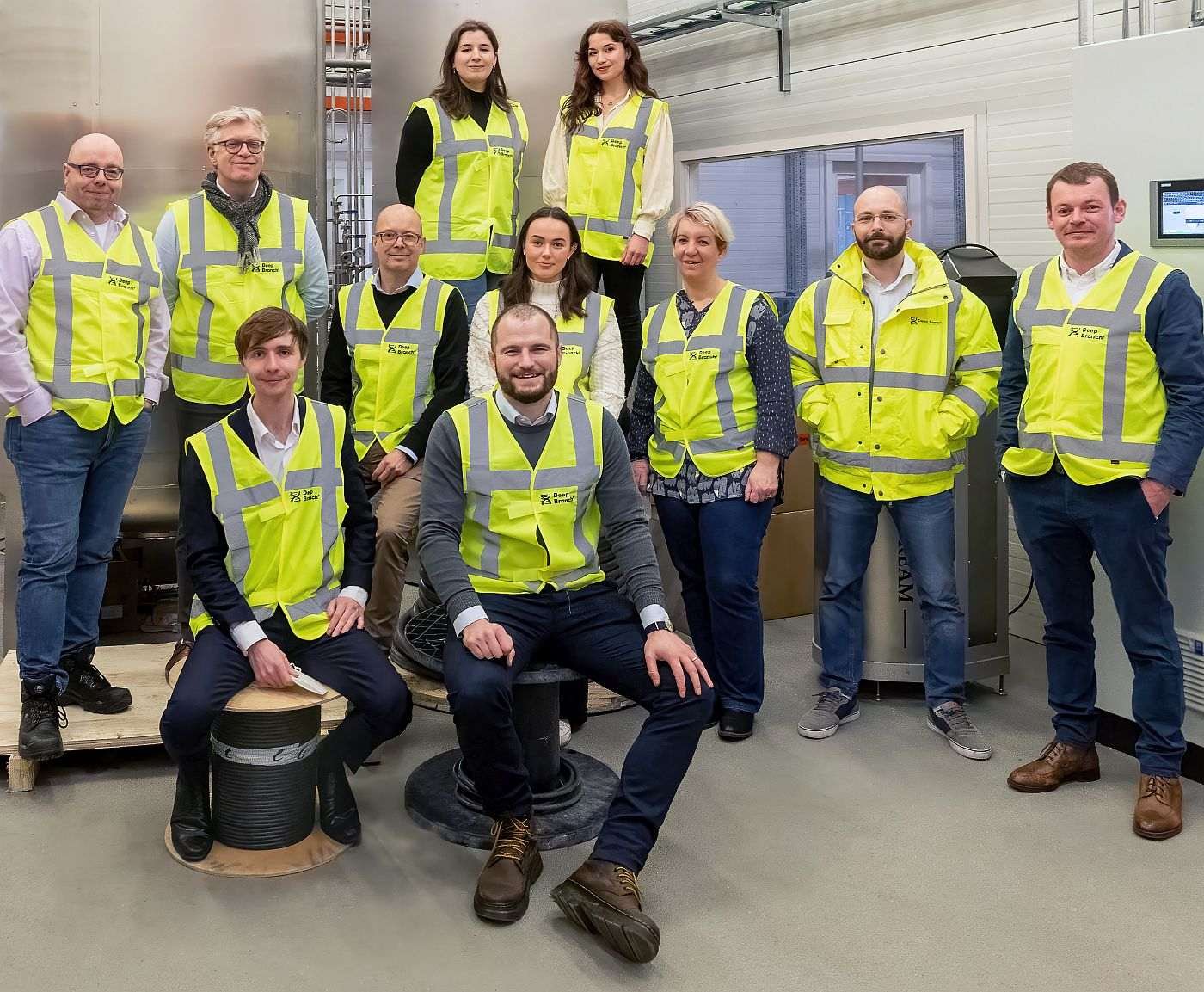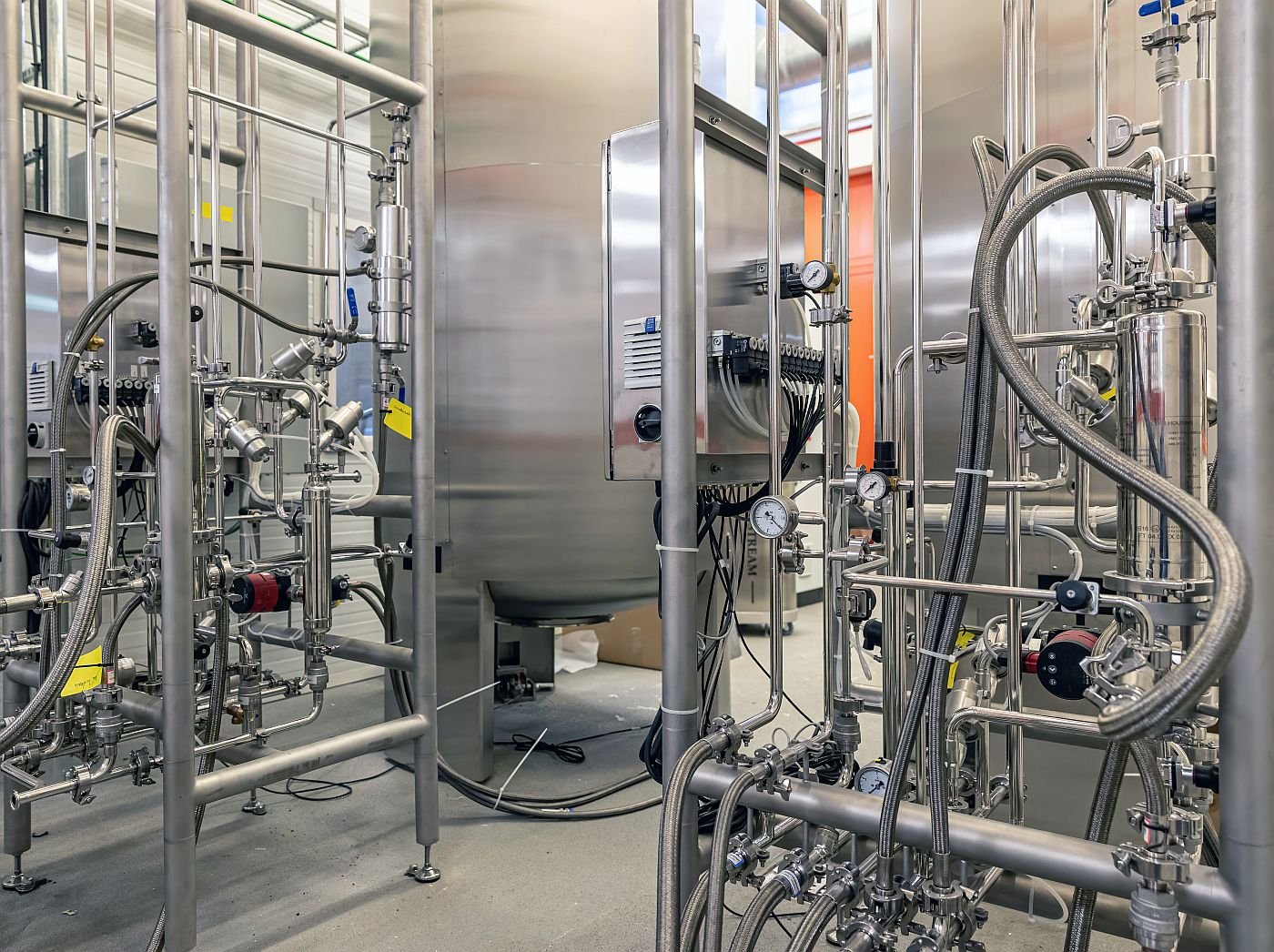On paper, making protein from thin air instead of purified sugars sounds enticing. Called gas fermentation, the process requires no agricultural land, the feedstock is limitless, and, depending on how the gases are sourced, its green bona fides are impressive.
In practice, startups in this space face multiple challenges. Partners, investors, and potential customers must be persuaded that there’s a market for novel proteins. “Green” sources of key inputs are not all ready for prime time. And most importantly, investors that were willing to part with large sums to fund capex for pricey alt protein facilities in 2021 are being rather more circumspect today.
That said, the recent demise of Austrian gas fermentation startup Arkeon notwithstanding, the tech is commercially viable at scale, insists Dr. David Welch, cofounder at Synthesis Capital, an early investor in the startup: “We’re confident that Arkeon’s technology will be acquired and brought to scale.”
At Copenhagen-based gas fermentation startup Aerbio, which grows a protein-rich, Non-GMO hydrogen-oxidizing bacterium fed on carbon dioxide, hydrogen, oxygen, ammonia, and salts, cofounder and CTO Dr. Rob Mansfield is under no illusions about the challenges ahead, especially when it comes to fundraising.
But the technology itself is both viable and scalable, insists Mansfield, a synthetic biologist who teamed up with molecular biologists Dr. Bart Pander and Dr. Peter Rowe in 2018 to found Deep Branch Biotechnology (now Aerbio). “That’s actually not what keeps me awake at night.”
At scale, he says, “We think we can compete on price with all high-quality protein ingredients. The biggest challenge is getting your location right, which will be mainly driven by the upstream pricing of energy and therefore hydrogen.”
High protein, high productivity, low cost of goods
Aerbio is laser focused on three things: “high protein, high productivity, and low cost of goods,” says Mansfield, who built a pilot plant in the Netherlands and recently moved to Copenhagen to build a demo-scale facility designed to churn out a ton of its ‘Proton’ ingredient per day in 2027.
Aerbio’s bacterium is very good at producing a lot of protein, very quickly, ticking boxes one and two, Mansfield tells AgFunderNews. Ticking the third box, low COGS, is more challenging, and depends on finding sources of gaseous inputs that are both “green” and affordable.
While some startups in the space initially claimed that they would source “green hydrogen” from electrolysis (splitting water into its constituent parts) and carbon dioxide from direct air capture, for example, neither is really commercially viable as an input for large scale “protein from air” plant right now, he says.
For gas fermentation systems using methane as an input, meanwhile, “The argument was always that you can go to [‘green’ sources such as] anaerobic digesters [which convert organic waste into methane],” he says. “But for a large-scale plant, you will never get the volumes you need that way.”

Carbon dioxide: 4 options
Aerbio’s process has been demonstrated with carbon dioxide from the Drax power station in the UK, which primarily burns biomass pellets made from forestry residues such as sawdust and waste wood from managed forests.
“We also validated the compatibility of our technology with raw flue gas [untreated exhaust gases emitted directly from the combustion process at the Drax power station], which worked, but we wouldn’t do it again as there’s too much impurity in there,” says Mansfield. “Not that the biology cares, but it slows down the process. We’ve also tested CO2 from Shell’s Pernis refinery in Rotterdam, which supplies CO2 to greenhouses which worked well, although I would prefer to use a green biogenic source of CO2 [that comes from burning forest residues or ag waste rather than fossil fuels].”
A third option is geogenic CO2, or carbon dioxide originating from geological processes rather than biological activity, he says. “There are a number of sites in places such as Iceland with volcanic activity that are producing large volumes of CO2, which if cleaned appropriately, we know will work.”
Finally, CO2 from direct air capture is a “really nice idea, but the costs have got to come down to make it viable,” he says.
Hydrogen: a transition play
As for hydrogen, the second major input in Aerbio’s process, “We need to do this as a bit of a transition play,” suggests Mansfield. “If we want to scale up, we can wait for someone to build volumes of green hydrogen to support a 100,000-ton or 200,000-ton a year [gas fermentation] protein plant. And that doesn’t exist today, so they would be building it for a new unproven technology, which is going to be very difficult.
“So we’re looking at regions where there’s existing, preferably blue hydrogen sources such as natural gas [methane] where the carbon [produced in a steam methane reforming process to produce hydrogen and CO2] is captured and we take the hydrogen.”
Ultimately, “following green ammonia is a really good way to go, because wherever green ammonia [which starts with green hydrogen] can be deployed, our technology can go too,” says Mansfield.

Bioreactors: Optimal mass transfer
When it comes to the production process, getting the gases you’re pumping into your bioreactor into the liquid containing your microbes in the most efficient way, is mission critical, says Mansfield.
So what does this mean for bioreactor designs, which vary somewhat in the gas fermentation space, with Calysta using a horizontal piping system, for example, and Unibio using a vertical system?
“There is efficiency on an output per liter basis,” notes Mansfield. “But that doesn’t always translate to efficiency on dollars spent, if for example you have an inefficient means of putting energy into your system to drive mass transfer. So we’re looking for a simpler, more efficient, reactor design.”
A simpler bioreactor should also lower the risk of contamination, he says. “If you’re filling your system with surfaces on which things can grow, they can be very difficult to clean.”
Funding: No green premium
As for the business case for gas fermentation, says Mansfield, few customers are prepared to pay a green premium, so the tech has to compete directly with other high-quality proteins used in aquaculture, pet food, and human food.
“We thought people would be really excited about sustainable protein, and it turned out people are just excited about protein. And here, cost drives market engagement as much as anything else. On the customer side, we’re getting very positive feedback, particularly with our recent trials on salmon, but on the investment side, the biggest challenge for any technology trying to make a difference at a large scale, is you go through two valleys of death, one for your pilot and one for your demo.
“No one wants to build a demo plant. In fact, no one really wants to build a pilot plant,” he observes, because they are not large enough to be profitable. But without them, no investor is going to help finance a larger, commercially viable, plant.
Not all single cell proteins are the same
The protein produced by Aerbio is benchmarked vs fishmeal, he says. “The results that we’ve got from our recent CRO [contract research organization] trial indicate that this would be the best single cell protein that has ever been put through trials, at least at this particular CRO, which had done several others [on single cell protein]. The digestibility was comparable to that of fishmeal and the protein content was substantially higher. All of the performance indicators that we measured were positive.”
However, investors and potential partners are still learning about the unique qualities of Aerbio’s protein, he says.
“One of the questions we get asked a lot is ‘Are all single cell proteins all the same?’ The answer is no, the level of variability is substantial. A banana is more closely related evolutionarily to a fish than two single cell proteins might be.”
Which is frustrating, he says, as some investors and potential customers think that once they’ve seen one single cell protein, they’ve seen them all. “They are very different from one another, even if they look at the same.”
The post Gas fermentation: the future of sustainable protein, or hot air? In conversation with Aerbio appeared first on AgFunderNews.














